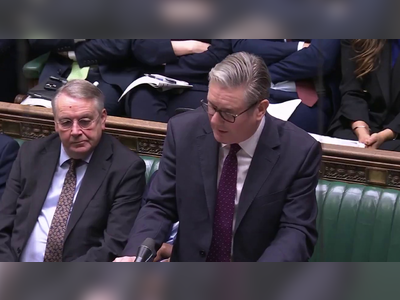No Instant Fix: Rising Costs Challenge Ireland's Cost-Rental Housing Model
As construction costs and interest rates climb, the affordability of Ireland's innovative cost-rental housing is under scrutiny, challenging its long-term sustainability.
In the volatile landscape of housing markets worldwide, Ireland’s pioneering cost-rental housing scheme has emerged as a beacon of hope for middle-income earners priced out of the private rental sector yet disqualified from social housing ties.
Launched just over three years ago, the initiative heralded a fresh approach to tackling housing affordability.
But as cost pressures mount, the viability and reach of this scheme are being questioned with increasing urgency.
Cost-rental housing, designed to provide long-term security and shield against market volatility, was initially celebrated for its affordability.
When the Taylor Hill estate in Balbriggan released its first 25 homes, over 1,000 prospective tenants clamored for the chance to pay rents up to 40% below the market rate—a financial lifesaver for many.
However, the ambitious program’s foundational economics are confronting harsh realities.
Jim Baneham, director of delivery and innovation at the Housing Agency, acknowledges the dual challenges of surging construction inflation and fluctuating interest rates.
These financial headwinds are driving cost-rental prices upwards, bringing into question the established notion of affordability pegged at 35% of a tenant's net income.
Despite legislative and policy frameworks, such as the €66,000 after-tax income ceiling and stipulated affordability limits, newer schemes are testing these parameters.
Recent listings for apartments in South Dublin's Shanganagh signal a narrowing affordability band, particularly for larger units.
It becomes starkly apparent as O’Devaney Gardens, slated for completion in 2026, forecasts three-bedroom rents bordering the upper income qualification limit.
While the €66,000 income threshold is enshrined in law, the affordability criterion remains a policy guideline subject to reevaluation amid escalating costs.
The prospect of sharing tenancy in cost-rental properties is touted as a potential mitigative measure, although its benefits may be limited mainly to individuals rather than families.
“There’s no magic wand, unfortunately, in making it cheaper,” admits Baneham.
“What we offer is a quality home with a landlord committed to long-term maintenance.
The benefits transcend present-day tenants, extending to future generations.”
As Ireland grapples with these challenges, the trajectory of cost-rental housing serves as a microcosm for global discussions about sustainable urban planning, economic resilience, and the balancing act between necessity and feasibility.
Investors, policymakers, and civic stakeholders alike must tread carefully, mindful of the ambitious goals that spurred the scheme's inception and the pressing realities that now confront it.
Launched just over three years ago, the initiative heralded a fresh approach to tackling housing affordability.
But as cost pressures mount, the viability and reach of this scheme are being questioned with increasing urgency.
Cost-rental housing, designed to provide long-term security and shield against market volatility, was initially celebrated for its affordability.
When the Taylor Hill estate in Balbriggan released its first 25 homes, over 1,000 prospective tenants clamored for the chance to pay rents up to 40% below the market rate—a financial lifesaver for many.
However, the ambitious program’s foundational economics are confronting harsh realities.
Jim Baneham, director of delivery and innovation at the Housing Agency, acknowledges the dual challenges of surging construction inflation and fluctuating interest rates.
These financial headwinds are driving cost-rental prices upwards, bringing into question the established notion of affordability pegged at 35% of a tenant's net income.
Despite legislative and policy frameworks, such as the €66,000 after-tax income ceiling and stipulated affordability limits, newer schemes are testing these parameters.
Recent listings for apartments in South Dublin's Shanganagh signal a narrowing affordability band, particularly for larger units.
It becomes starkly apparent as O’Devaney Gardens, slated for completion in 2026, forecasts three-bedroom rents bordering the upper income qualification limit.
While the €66,000 income threshold is enshrined in law, the affordability criterion remains a policy guideline subject to reevaluation amid escalating costs.
The prospect of sharing tenancy in cost-rental properties is touted as a potential mitigative measure, although its benefits may be limited mainly to individuals rather than families.
“There’s no magic wand, unfortunately, in making it cheaper,” admits Baneham.
“What we offer is a quality home with a landlord committed to long-term maintenance.
The benefits transcend present-day tenants, extending to future generations.”
As Ireland grapples with these challenges, the trajectory of cost-rental housing serves as a microcosm for global discussions about sustainable urban planning, economic resilience, and the balancing act between necessity and feasibility.
Investors, policymakers, and civic stakeholders alike must tread carefully, mindful of the ambitious goals that spurred the scheme's inception and the pressing realities that now confront it.











